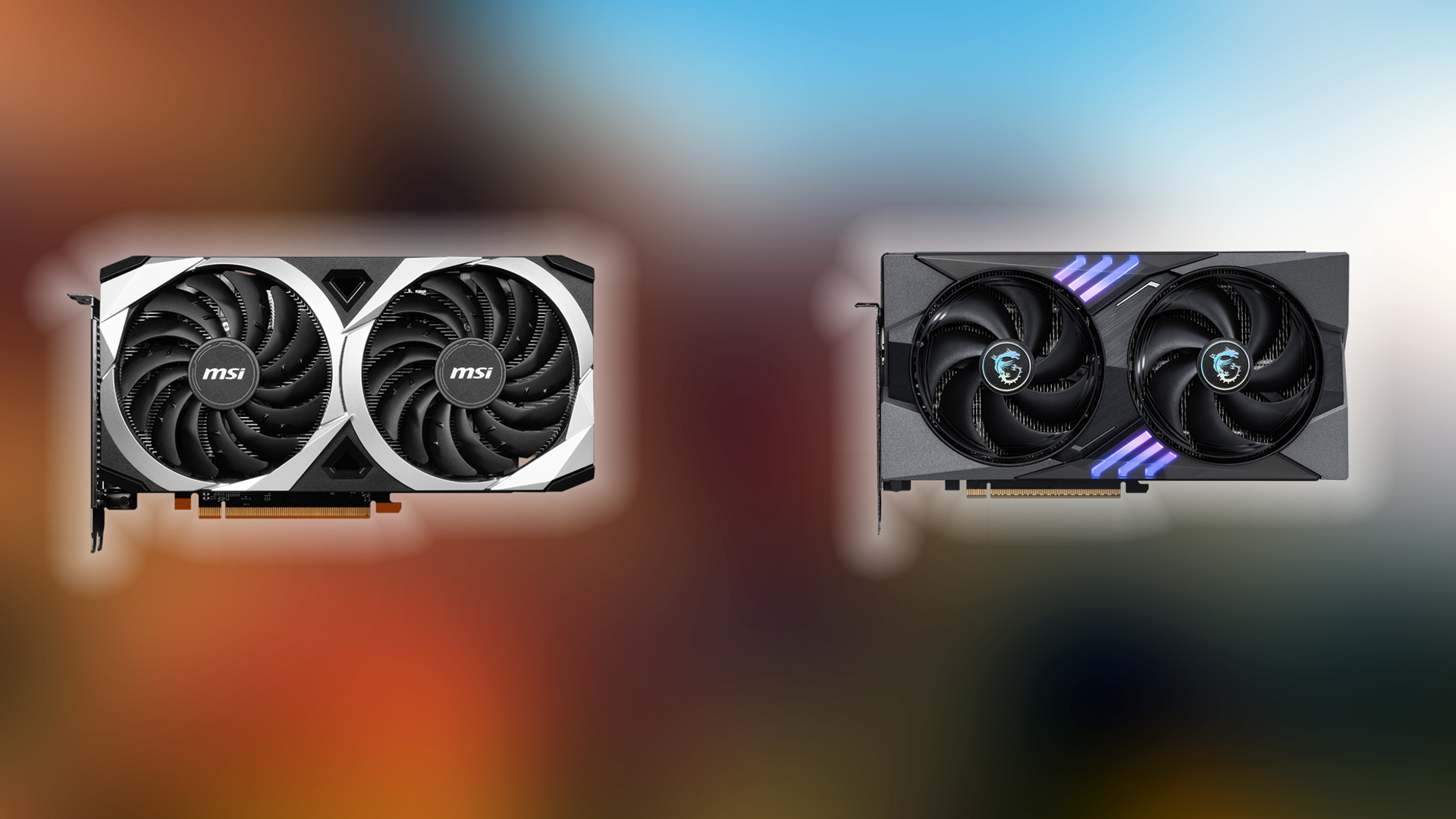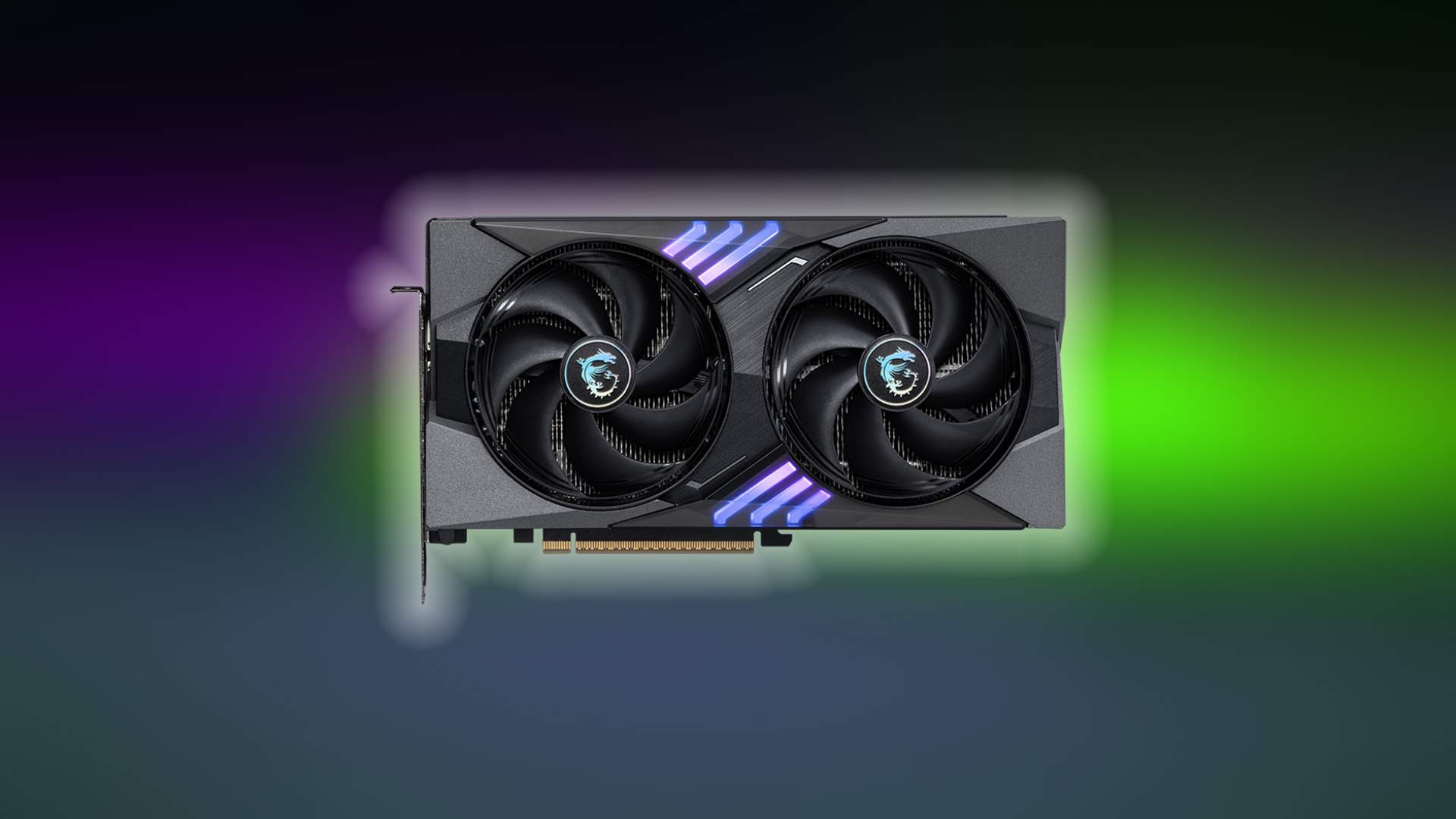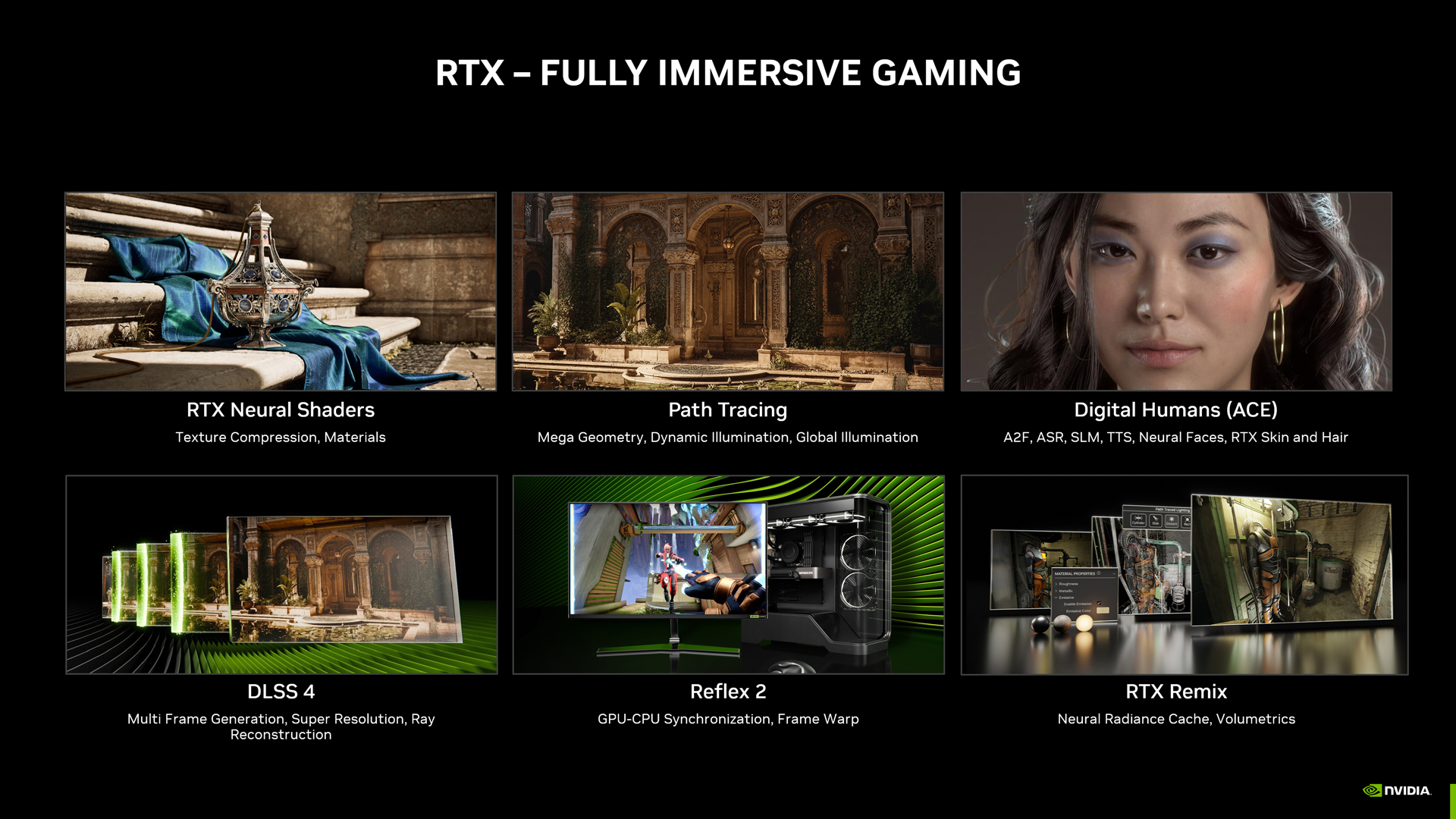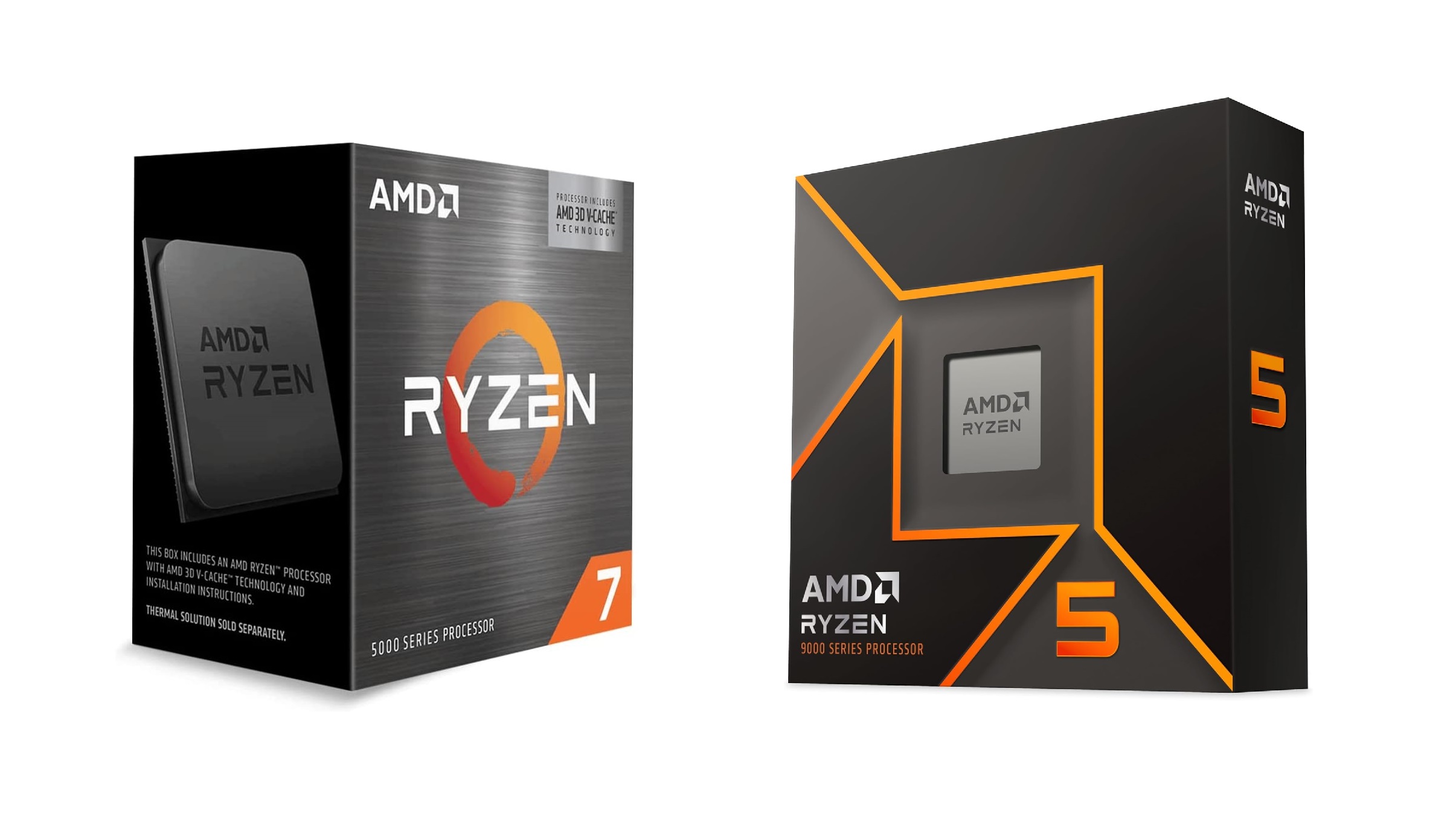This article compares the RTX 5060 Ti with the AMD RDNA 3 RX 7600 XT regarding specifications, pricing, performance, and more.

The Nvidia RTX 5060 Ti and the Radeon RX 7600 XT are popular budget GPUs for 2025. These target the lower mid-range to upper mid-range build segments. Both of these are architecturally different GPUs. To begin with, they handle GPU workloads in various ways. The 7600 XT offers good raster performance, is priced lower, and has the same VRAM. The 5060 Ti offers way better performance, but at a much higher price, while consuming the same amount of power as the 7600 XT. This article compares the two GPUs across specifications, pricing, real-world performance expectations, and value to help you decide which one to choose.
Note: The information presented within this article is based on publicly available specifications and architectural details. No proprietary or third-party benchmark data has been used.
RTX 5060 Ti vs RX 7600 XT

To begin with, both GPUs are part of the 60-class lineup. RDNA 3 and Blackwell offer these GPUs in 8GB and 16GB variants. (RX 7600 for RDNA 3). The 7600 XT was released in 2024 and falls into the lower mid-range to entry-level territory. It can easily play older titles with rasterization, such as Skyrim, at high frame rates (FPS) in 1080p resolution.
The 5060 Ti, on the other hand, can do 1440p high settings gameplay in modern ray-tracing titles, and is equally capable in raster performance. Regarding raster performance, and taking 3DMark Timespy results, the 5060 Ti scores an average of 15,389 points, while the 7600 XT scores an average of 10,499 points.
It is worth noting that both cards are equipped with DisplayPort 2.1, which means they can be paired with high refresh rate displays without requiring Display Stream Compression (DSC). The only drawback of the 7600 XT is that it is limited to a PCIe Gen 4 x8 interface, which may cause performance issues for older-generation PC users with PCIe Gen 3 interfaces.
Specs Comparison
| Features | RTX 5060 Ti | RX 7600 XT |
| Architecture | Blackwell 2.0 (2025) | RDNA 3 (2024) |
| GPU | GB206 | Navi 33 XT |
| VRAM | 8GB / 16GB GDDR7 | 16GB GDDR6 |
| Memory Bus | 128-bit | 128-bit |
| Memory Bandwidth | ~448 GB/s (16GB) | 288 GB/s |
| Boost Clock | ~2.57 GHz | 2.76 GHz |
| FP32 Compute | ~24 TFLOPS | 22.57 TFLOPS |
| Cores/Stream Processors | 4608 CUDA cores | 2048 Stream Processors |
| Ray Tracing Cores | 30 | 32 |
| Power Consumption (TDP) | 180W (16GB) | 190W |
| PCIe Interface | Gen 5 x8 | Gen 4 x8 |
| MSRP | $379 (8GB) / $429 (16GB) | $329 |
| Release Date | April 2025 | January 2024 |
Performance overview
1080p and 1440p Gaming
The 7600 XT delivers a raster performance that matches that of an RTX 4060, occasionally surpassing it. The 5060 Ti is in a different league and is beyond the comparison point of a 7600XT. The 5060 Ti behaves like a 70-class card compared to the 7600 XT. The only similarity between the two GPUs is the VRAM, which validates this comparison. When you enable ray tracing in titles like Cyberpunk or Black Myth Wukong, the 5060 Ti delivers a smooth, playable experience, while the 7600 XT struggles to keep up.
4K Gaming
Although the 5060 Ti has a higher memory bandwidth, despite its narrower bus width, thanks to GDDR 7 memory, it still isn’t enough. You should avoid pairing either of these GPUs for 4K. The 5060 Ti performs best at 1440p resolution, while the 7600 XT targets 1080p gaming. Despite having 16GB of VRAM, it isn’t fast enough.
Power Efficiency
RDNA 3 falls short in terms of efficiency when compared to Blackwell. At the 200W power budget, which is the max TDP of both cards. The 5060 Ti delivers an incredible power-to-performance ratio, even at 1440p. You can undervolt the Blackwell cards and gain even more from it. As for the 7600 XT, it lacks the same undervolting potential as RDNA 2. Its performance at 200W power doesn’t appeal much, considering we have the RTX 4060 and 4060 Ti, which do much better with lower power.
Price & Value
MSRP & Market Pricing:
- RTX 5060 Ti: $379 (8GB) / $429 (16GB)
- RX 7600 XT: $329
The 7600 XT is a lot cheaper than the 16GB variant of the 5060 Ti. If your budget falls short of the 5060 Ti 16GB, consider tallying used GPU prices before opting for a new 7600 XT. Sometimes you can grab a used 6800 XT at that price. If you’re fortunate, i.e., if a new GPU and warranty are your top priorities, then the 7600 XT is a sensible choice.
Pros & Cons Summary

| Card | Pros | Cons |
| RTX 5060 Ti | Superior ray tracing and AI features (DLSS 4, MFG), efficient and better video encoders, LLM compatibility | Higher price, 128-bit bus holds back its true potential, 8GB model less appealing for new games |
| RX 7600 XT | 16GB VRAM at a lower price, offering good entry-level raster performance for 1080p and 1440p resolutions. | Weaker ray tracing, PCIe Gen 4 x8, a less robust upscaling ecosystem, slower memory bandwidth, and subpar efficiency. |
Bottom Line: Which Should You Buy?
Get the RTX 5060 Ti if you want to play AAA RT titles, a new product featuring 16GB of VRAM and a full product warranty. Consider this option if you are a video editor or streamer on a budget, seeking one of the best H.264/265 encoders. It may also appeal to you if you want to run large language models (LLMs) at higher quantization levels.
Get the 7600 XT if you want a new, entry-level 16GB offering decent raster performance at 1080p. It supports RT, but enabling it for titles such as Cyberpunk or Black Myth Wukong will significantly reduce your framerates.
Lastly, with both cards, 1440p in the case of the 5060 Ti, you’ll need to rely on DLSS when playing RT-heavy games. The same applies to the 7600 XT, but at 1080p, just FSR instead of DLSS.
Looking For More Related to Tech?
We provide the latest news and “How To’s” for Tech content. Meanwhile, you can check out the following articles related to PC GPUs, CPU and GPU comparisons, mobile phones, and more:
- 5 Best Air Coolers for CPUs in 2025
- ASUS TUF Gaming F16 Release Date, Specifications, Price, and More
- iPhone 16e vs iPhone SE (3rd Gen): Which One To Buy in 2025?
- Powerbeats Pro 2 vs AirPods Pro 2: Which One To Get in 2025
- RTX 5070 Ti vs. RTX 4070 Super: Specs, Price and More Compared
- Windows 11: How To Disable Lock Screen Widgets
 Reddit
Reddit
 Email
Email


